How to Make Sourdough Starter
This post may contain affiliate links.
In order to bake sourdough bread successfully, you need to create your own sourdough starter, a bubbly best friend if you will. Here you'll find easy step by step instructions for making a sourdough starter from scratch. You'll find notes on what to do each day, as well as the type of flour to use and a handy troubleshooting guide - all essential for making a sourdough starter.
You can find my step by step instructions for how to make a sourdough starter (including a video) in the recipe card at the end of this post.
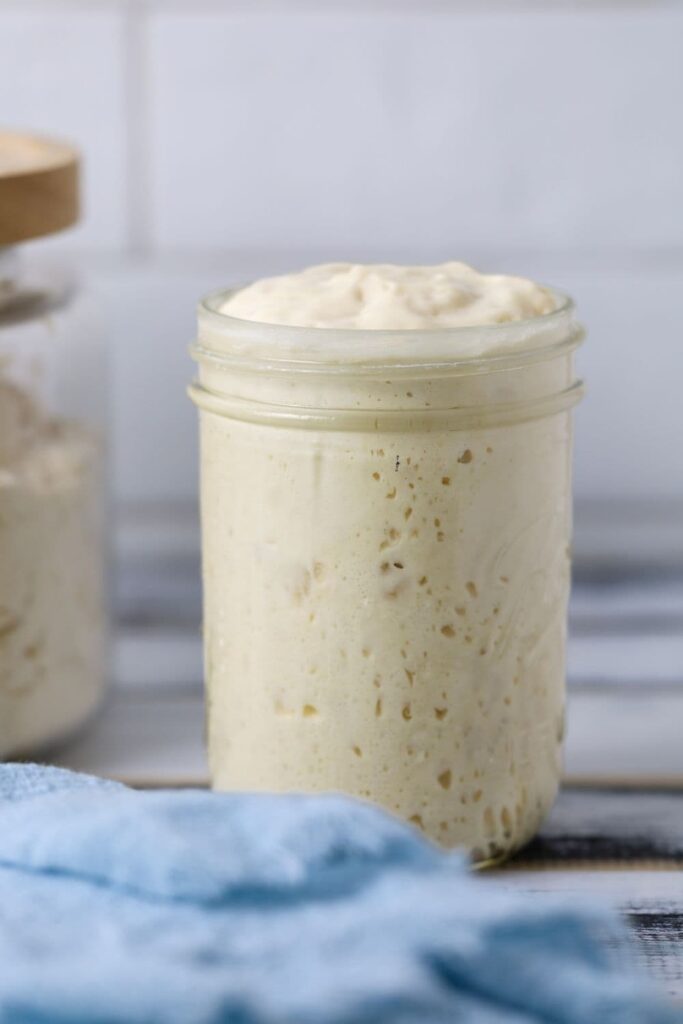
What Is A Sourdough Starter?
A sourdough starter is a mixture of flour and water which is colonised with wild yeast and bacteria over a period of time. The mixture is maintained at room temperature while it's being established. Then it can be kept in the refrigerator once it's considered mature. Active sourdough starter is used to bake sourdough bread.
The most amazing part is that every single sourdough starter will be unique in its own way because it is dependent on many environmental factors unique to your home and environment (in fact many baker's have fun naming sourdough starter). Want to understand the science behind a sourdough starter, take a look at how a sourdough starter works. You might also find the history of a sourdough interesting.
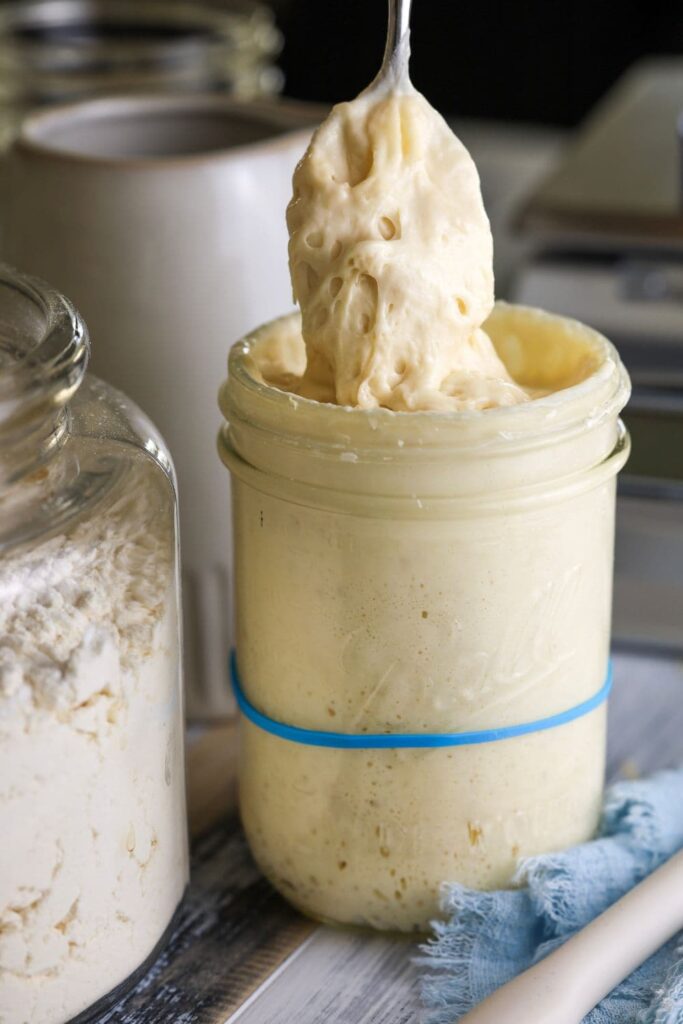
What Equipment Will You Need?
You don't need any fancy equipment to make a sourdough starter, but you will need:
- Clean Glass Jars - I recommend having at least 2 jars on hand (I prefer 16oz mason jars). Check out the sourdough starter jars I recommend.
- Rubber Band - is really handy to place on your jar so you can check when and if your sourdough starter is doubling.
- Spatula or something to stir your sourdough starter with (a butter knife is a good stirring tool too)
- Digital scale - this is essential for accurately measuring the flour and water for your sourdough starter.
- Flour - all purpose flour or bread flour is fine to use. Having some rye flour or whole wheat flour on hand to strengthen your sourdough starter is also a good idea.
- Water - good quality, clean water is essential to making a sourdough starter. Do not use distilled water or tap water full of chlorine (although filtered tap water is perfectly fine). If you're not sure of the quality of your water, use bottled water.
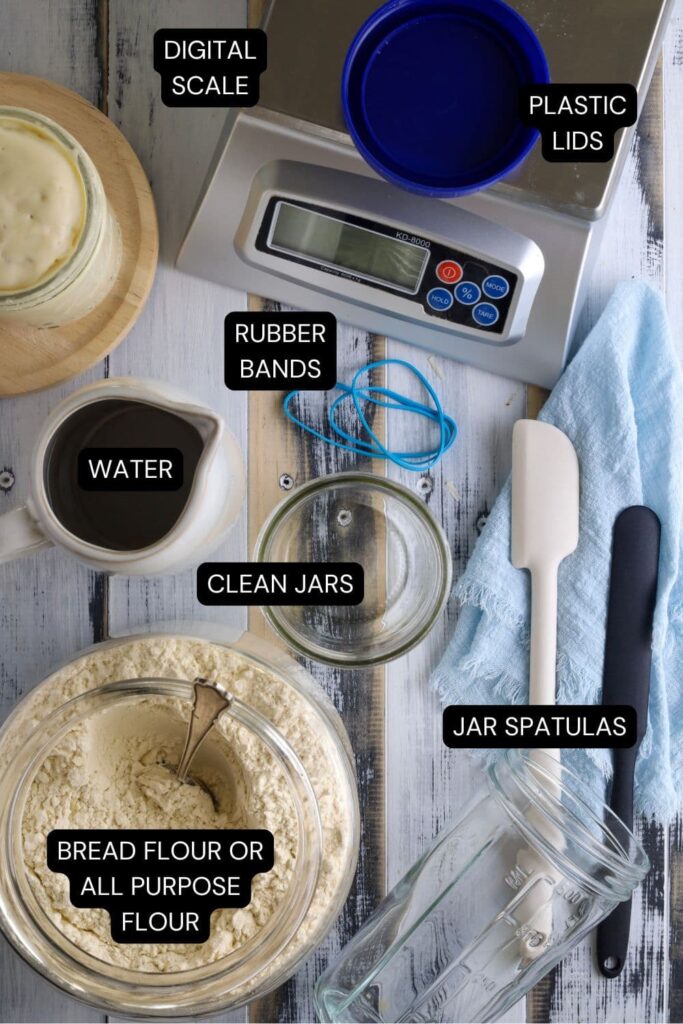
How Long Does It Actually Take?
There's no doubt, making a sourdough starter takes time and a lot of patience! While it generally only takes about 7 days to create a viable sourdough starter, it will usually need more time before it’s truly ready for baking. You can check out my guide to understand when your sourdough starter is ready to bake with. The float test isn't always a reliable method to check your sourdough starter's readiness for baking. Just because it floats, doesn't mean it's ready to bake sourdough bread with.
The exact timing depends on your home environment, particularly temperature and conditions. Don’t be discouraged, your starter can still be used, but you’ll notice your sourdough loaves improve as it continues to mature. Many bakers find their starter becomes reliably “active” after around 14 days, though for some it can take several months. This is totally ok.
In the meantime, you don’t have to let your discard go to waste. Try making sourdough pancakes, sourdough waffles or even a quick sourdough discard sandwich bread. Just keep in mind that your starter should be at least 7 days old before you begin using the discard to bake with.
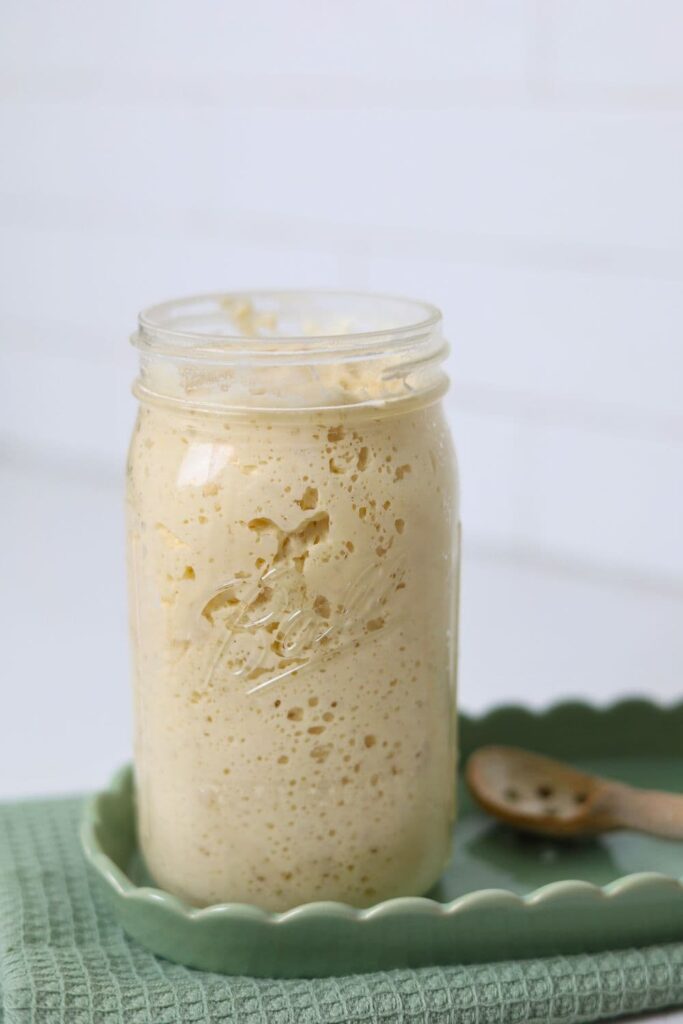
What Flour Should I Use to Make Sourdough Starter?
You can really use any type of plain, non raising flour made from a grain that you like for this sourdough starter recipe. Do not use self raising flour or bleached flour of any kind.
I have successfully created sourdough starters with plain flour (all purpose flour), bread flour and wholemeal spelt flour. I've also milled my own whole wheat berries and started a super active starter from this freshly milled whole-grain flour
Your starter will gather yeast not only from the environment, but also from the bacteria on the flour. Whole flours will have more of the "good stuff" on them, so will generally take off sooner. Read more about where the yeast in sourdough starter comes from.
A little rye flour added to your plain or bread flour will often help to get your starter bubbling sooner. It's like superfood for your sourdough starter!
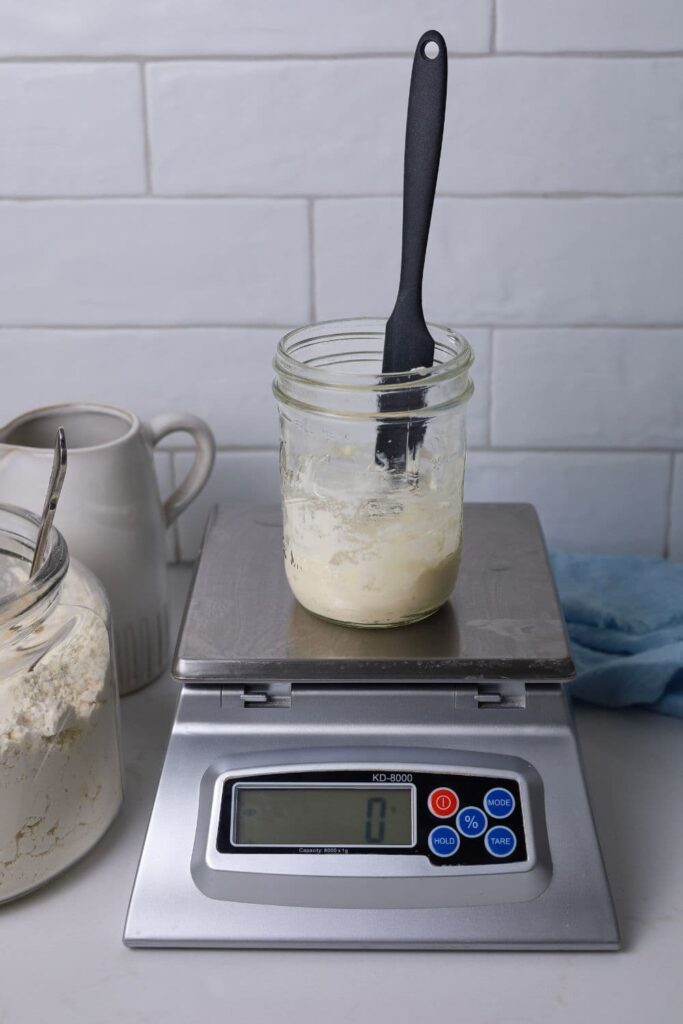
How To Make a Sourdough Starter
Days 1-3
To create your sourdough starter, begin with 50g of flour and 50g of water in a clean jar on Day 1. Mix well, cover loosely, and leave it somewhere warm for 24 hours. On Day 2, simply stir the mixture to add oxygen, no extra flour or water needed. By Day 3, you’ll start a routine of discarding some of the starter and feeding the remainder with equal parts flour and water (50g each). This daily feeding encourages growth, bubbles, and even some interesting smells - completely normal signs that your starter is alive. If you notice a layer of liquid on top, called “hooch,” stir it back in when you feed.
Days 4-7
From Day 4 onward, your starter will need to be fed twice a day, around 12 hours apart. Continue discarding before each feed and watch as your starter becomes stronger, rising higher each time. By Day 5, you may want to mark your jar with an elastic band to track its growth. Keep this up through Day 6 and beyond. On Day 7, your starter will officially be a week old! While it may not be fully mature just yet, the key is consistency.
Keep feeding twice daily until it reliably doubles within 2–6 hours of a feeding. At that point, your starter will be strong enough to bake with. It will continue to improve as it matures over the coming weeks.
You will find a very detailed set of instructions for making a sourdough starter in the recipe card at the bottom of this post.
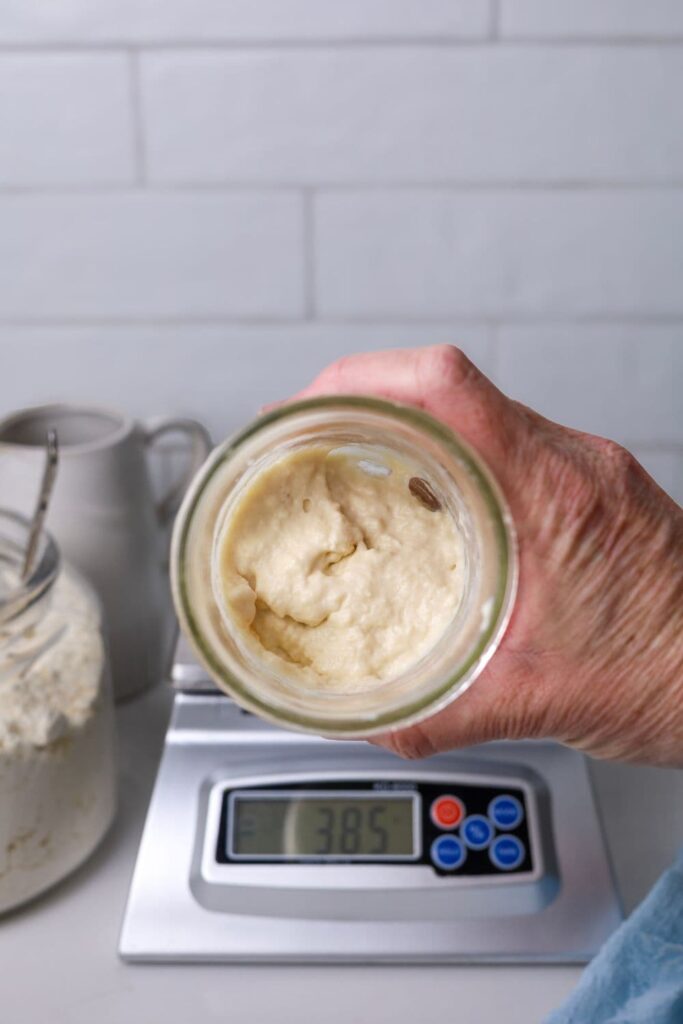
Tips For Success
- Be patient! You won't create magic overnight, but with time and patience, you will make a thriving sourdough starter.
- Temperature is important. Try to keep your starter between 24-28C (75.2-82.4F) to encourage fermentation.
- Use a scale. Skip the cups and spoons and measure your flour and water accurately to give your starter the best chance.
Troubleshooting Your Sourdough Starter
While you are growing or developing your sourdough starter, you may have some issues or questions that arise.
Here are the most common questions that I get asked about sourdough starters. You might also like this comprehensive list of the most common sourdough starter questions I get asked.
- Liquid forming in or on top of your starter - sometimes you may get some dark liquid forming on top of or in the middle of your starter. It's called hooch and is perfectly normal (it's actually a mixture of alcohol, water and byproducts of the fermentation process). Just pour it off if you can and feed as per normal (if you stir the hooch back in, you'll make your sourdough starter hav ea much stronger flavor). You'll find that your starter develops hooch when it is hungry. You can read about how to prevent hooch on sourdough starter.
- My starter smells like nail polish remover - again it's perfectly normal, it's just hungry, so feed, feed, feed.
- My starter isn't bubbling like the first few days - sometimes starters start out strong and then taper off a little between days 3-7. It's ok and may just be that the good bacteria is taking a little longer to win. Just keep feeding it consistently and you should see some action. Even if it's not really doing anything, the yeast will still need to be fed.
- How do I keep my starter warm - it's not totally essential to keep to keep your sourdough starter warm, it will still work. It will just take a lot longer in a colder environment. Some ideas to keep your starter warm are inside the oven with the light on, next to the kettle, inside an Eziyo yoghurt maker or in a cupboard next to your oven. Check out this guide to keeping your sourdough starter warm.
- Fruit Flies in my starter - your sourdough starter may attract fruit flies. They might have already been in your kitchen or they've heard there's new food! You can eliminate fruit flies in your sourdough starter using this guide.
- Why is my sourdough starter forming a skin? - sometimes you'll find that your sourdough starter develops a crust or skin. It's totally ok and just means that it's getting a bit too dry on top. Try covering your sourdough starter with a jar lid that's not screwed on. Just scrape the skin off and feed as per normal.
- My starter has grown mold - if your starter develops anything pink or orange or furry, it's definitely time to ditch it and start again. Make sure that your jar is clean, especially the sides of the jar. If the mold happens a few times, consider using a different flour as sometimes the mold spores come from the flour and not the environment. Believe it or not, my very first sourdough starter actually grew mold (I was heartbroken), but the experience made me stronger and allowed me to get a better understanding of how sourdough starter works.
- Can I feed my starter with different flour? - If you run out of the type of flour you started with, it's ok to feed it with a different flour. If you just feed it once and then go back to the type you started with you shouldn't have any issues. If you are swapping the type of flour for all subsequent feeds then your starter may go through an adjustment stage as the levels of bacteria and yeast get used to their new food.
- Can I cook with my discard straight way - no, you need to wait at least 7 days before you use your sourdough discard. It's not recommended to keep your sourdough discard before this time. When you're ready to start using your discard, you can use some of these sourdough discard recipes.
- What water to feed my sourdough starter with? - water quality is extremely important to a sourdough starter. You should avoid many types of water including distilled and reverse osmosis. You can read this full guide to the water you should use for your starter.
What To Do If Your Sourdough Starter Isn't Ready to Bake With:
- Continue to feed your starter with fresh flour and water twice a day for a few days until its consistently rising and falling. Remember that every starter will be different. It could take 14 days, it could take 28 days, but a consistent feeding schedule is key.
- If you need a break pop it in the fridge for a few days. When you’re ready, take it out and start feeding it twice a day again for a few days. I generally don't recommend keeping an immature starter in the fridge, however if you need a break or you're going away, this is an option.
- Try feeding your starter a different type of flour for a few feeds. Unbleached is best. Rye flour is always a good one - it's like superfood to your sourdough starter.
- If you live in a cooler climate you might only need to feed once a day. Check to see when your starter is actually hungry (it will fall and be smelly).
Why Does Hydration Matter?
The instructions for this sourdough starter use equal amounts of flour and water to achieve a 100% hydration level for your starter. Majority of recipes (and all of my recipes) use a 100% hydration starter. If you need guidance on understanding hydration more, take a look at my guide to sourdough hydration for beginners.
As long as you always feed your starter equal amounts of flour and water, it will be at 100%. Even if you only have 20g of starter, and you feed it 50g of water and 50g of flour, you'll still have a 100% hydration starter.
When you are feeding your starter, you just need to make sure you always feed it more than it weighs itself. For example if you have 50g of starter in your jar, you'd want to feed it at least 50g of water and 50g of flour (a total of 100g) to make sure it has enough food.
Generally, the rule is 1:1:1 so 1 part starter, 1 part flour, 1 part water. But as long as you feed the starter more than it weighs, it will thrive. This is called a sourdough starter ratio. A lot of the time when a sourdough starter isn't doubling consistently, it's because it's not being fed enough. Always remember the 1:1:1 ratio.
A pasta madre is a good option if you want to build a lower hydration sourdough starter.
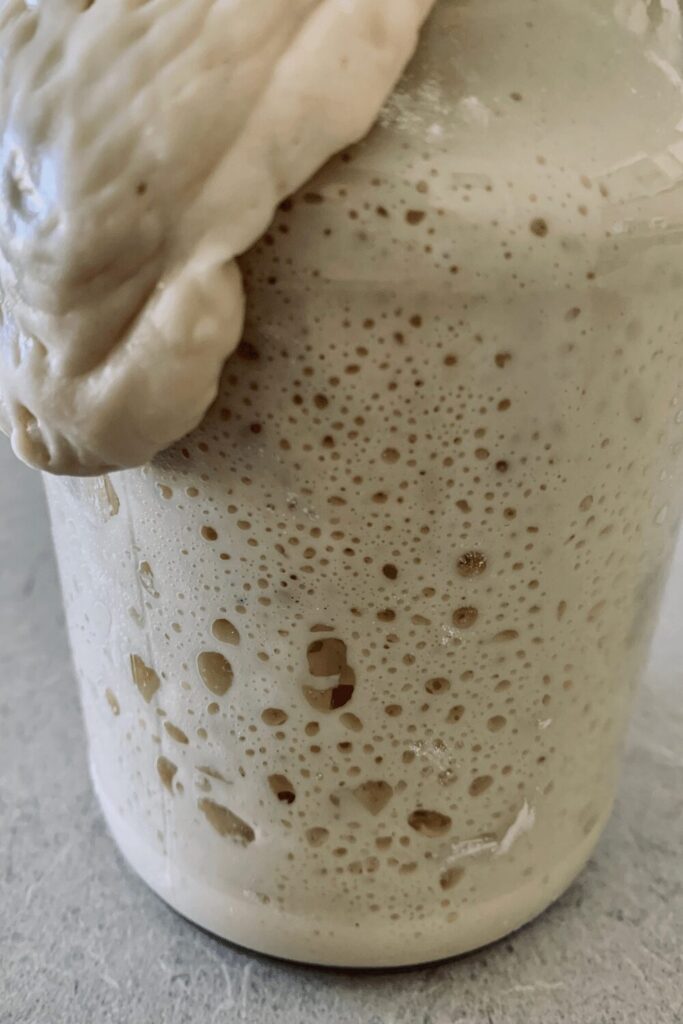
Maintaining A Sourdough Starter
Once you have a thriving sourdough starter established, you'll need to continue to feed your sourdough starter regularly to ensure it remains healthy and active.
There are lots of ways to feed a sourdough starter and I always get asked what the best way to do it is (especially when using a clean jar every time).
If you’d like to put your starter into a clean jar each time, then the easiest way to do it is to take 50g of your sourdough starter and place this into a clean jar. Feed the 50g of starter in the clean jar as normal (ie 50g of flour and 50g of water or whatever sourdough starter ratio you prefer). Creating less mess with your sourdough starter is always a good thing.
You could also use a bowl to pour the 50g of starter into and feed it and mix it in the bowl while cleaning your jar so you can pour it back in. This is a good method if you only have one jar to use.
You can either use the discard in the old jar or just wash out and have a clean jar ready for next time. It’s a good idea to transfer to a clean jar when the rim of your old jar gets really built up but you don't have to clean your sourdough starter jar as much as you think. If you’re feeding everyday, change your jar at least once a week.
How To Make Sure You Never Have to Start from Scratch
Once your starter is viable, it's a great idea to dry some of it out to ensure you never have to start again. These instructions on how to dehydrate your sourdough starter are your insurance policy to never having to start from scratch again. You'll simply be able to reactivate your dried sourdough starter if something happens to the starter on your kitchen counter.
Other alternatives to drying your sourdough starter include:
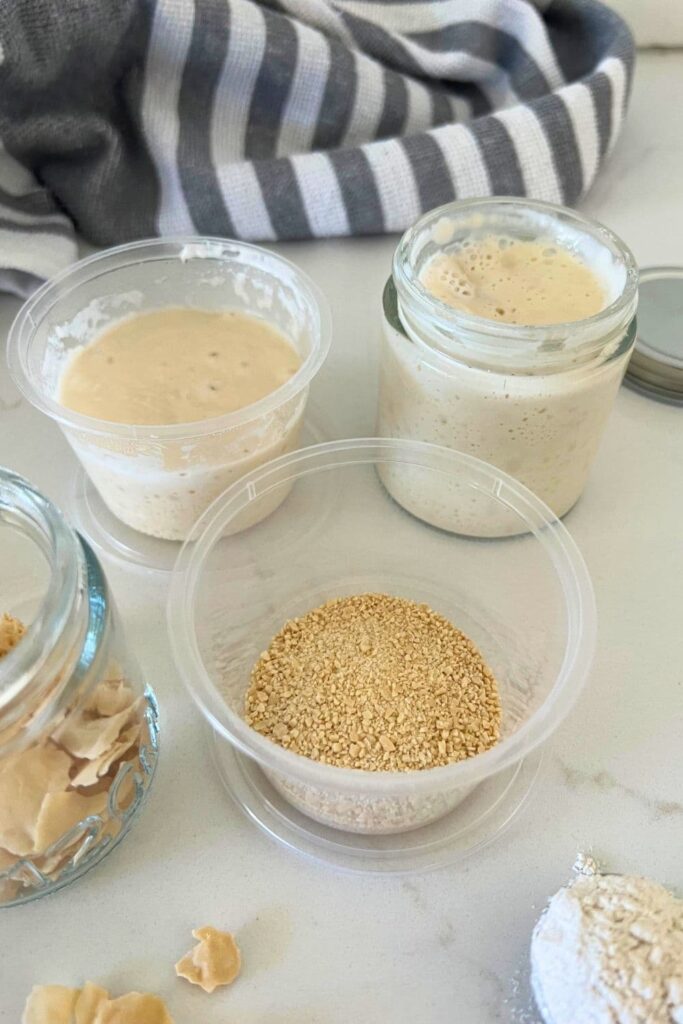
Using A Digital Kitchen Scale
I have provided the measurements for this starter in grams because it is easier to ensure accuracy (although sourdough starters are very forgiving and can tolerate eyeball measurements - as long as you're feeding your starter more than it weighs).
Many people come to my Facebook Group asking for help with their sourdough starter - and often the problem is that they are measuring using volume rather than weight (remembering a cup of flour does not weigh the same as a cup of water). Once they start weighing their ingredients accurately, their sourdough starters develop quickly and rarely have issues.
The benefits of weighing your sourdough ingredients vs using volume measurements cannot be ignored.
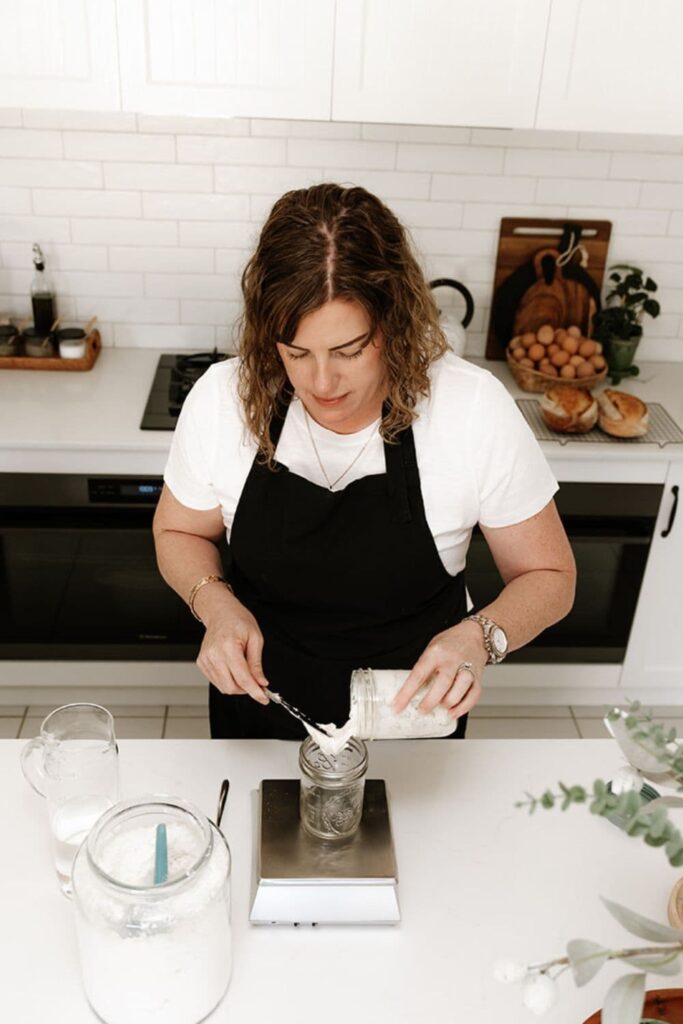
What to Bake with Your Sourdough Starter
When you are in the process of creating your starter (from 7 days onwards) you can start using your sourdough starter to make sourdough discard recipes like sourdough discard banana bread, sourdough blueberry buckle and sourdough discard lemon muffins.
Once you have a mature, active sourdough starter, you'll be able to use it to bake this simple sourdough bread recipe, as well as lots of other sourdough recipes like these sourdough dinner rolls, sourdough bagels and sourdough pizza dough.
Frequently Asked Questions
Yes, you can use gluten free flour to make a sourdough starter. Brown rice flour is a great one to start with, or a store bought blend of gluten free flour can be helpful too.
When your sourdough starter is considered mature, it should peak in around 4 to 6 hours when fed a 1:1:1 ratio, but the time it takes to peak will be dependent on the ratio you use and the temperature you keep it at.
Yes there are lots of different types. Read about 10 different types of sourdough starter.
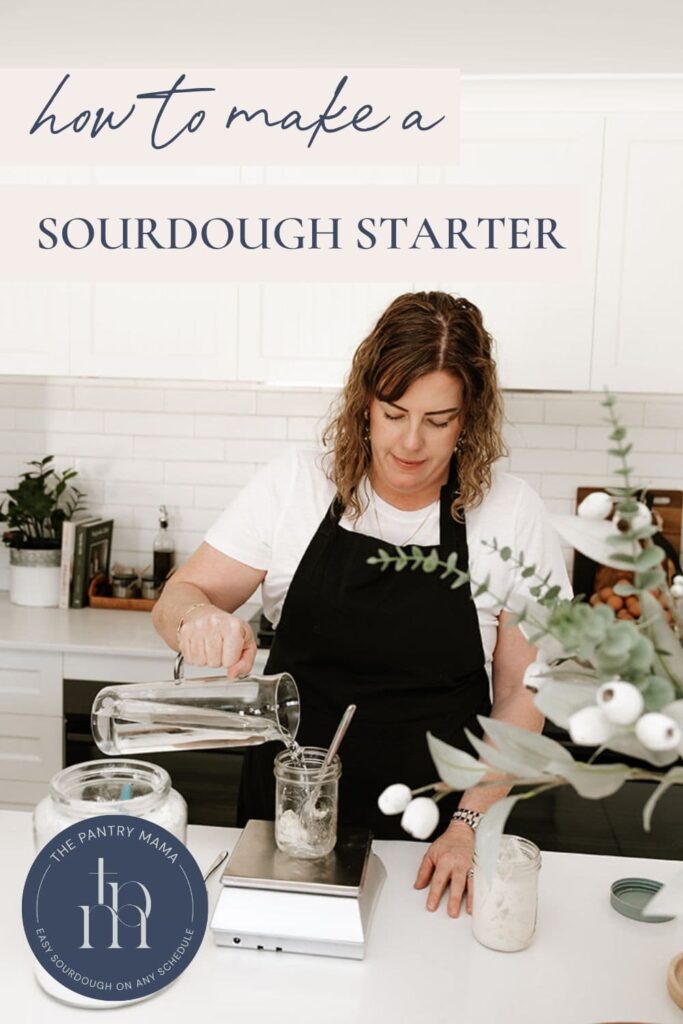
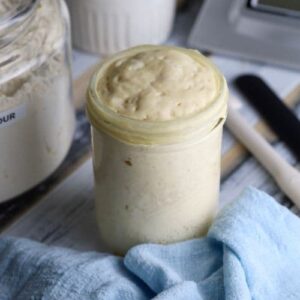
Sourdough Starter Recipe
Video
Equipment
- Clean Jar
- Digital Scales
- Silicone Spatula
Ingredients
- 50 g Flour Bread, All Purpose, Rye, Whole Wheat - whatever you'd prefer
- 50 g Water Filtered
Instructions
- DAY 1:All you need for today is 50g of water and 50g of flour plus a clean jar. Mix the water & flour together in the jar, pop the lid on loosely (or a piece of paper towel & elastic band). Place the starter somewhere warm for the next 24 hrs. If your house is cold, pop it near the kettle or oven to keep it warm.
- DAY 2:Once your starter is 24 hours old, you need to check on it and give it a good stir. You do not need to add anything today - just get some oxygen into your mixture and then recover and pop aside for another 24 hours.Your starter may already have some bubbles forming - this is a great sign. But it's also totally fine if it's not doing anything. Time is everything! Make sure it’s in a warm spot - you can find some ideas here.
- DAY 3:On day 3 remove half of your starter and then add 50g of flour and 50g of water to the remaining 50g of starter in your jar. Mix it together with the end of a wooden spoon, being sure to get lots of oxygen into your mixture. Replace the cover and pop it away until tomorrow.See notes below for more info on using a clean jar vs same jar.Don’t worry if you keep checking it - it’s completely normal It’s good to notice how it changes in shape, size and smell over the 24 hours.At this stage it's completely normal for it to smell really bad and to have developed a layer of liquid on top (this is called hooch). It might look like the water has separated from the flour but it's just telling you that it's hungry. Stir the hooch in when you feed your starter. It's also quite normal for it to double in size. Keep going - it will be fine
- DAY 4:Step 4 is to feed your starter in the same way as you did yesterday. Remove 100g of your starter and then add 50g of flour and 50g of water to the remaining 50g of starter in your jar. Mix it all together with the end of a wooden spoon. Replace the cover. You’ll need to do this twice today, around 12 hours apart. While your starter will be fairly forgiving, set a reminder on your phone if you think you’ll forget it’s just like having a pet.
- DAY 5:Step 5 is to feed your starter in the same way as you did yesterday. Remove 100g of your starter and then add 50g of flour and 50g of water to the remaining 50g of starter in your jar. Mix it all together with the end of a wooden spoon. Replace the cover. You’ll need to do this twice today, around 12 hours apart. It's a good idea at this stage to pop an elastic band around the jar you are using. Put the elastic band at the level of your starter when you feed it. This helps you to be able to see how far your starter is rising when it peaks.
- DAY 6:Step 6 is to feed your starter in the same way as you did yesterday. Remove 100g of your starter and then add 50g of flour and 50g of water to the remaining 50g of starter in your jar. Mix it all together with the end of a wooden spoon. Replace the cover. You’ll need to do this twice today, around 12 hours apart.
- DAY 7:YAY! Your sourdough starter is a whole week old. Keep feeding twice a day as you have been for at least 14 days.Now I know you want to get to baking bread … but just remember that the most important thing about this whole process is time. Your starter might be ready, but chances are it will need a bit longer to mature - generally 14 days. You need to keep feeding your starter the same way as you have been, twice a day (discarding before you feed) until it's consistently doubling within around 2-6 hours after you've fed it. Once it's consistently doubling after every feed you can try and bake with it. Your starter will keep maturing as you use it.For more information on how to know when your starter is ready, go here.
Notes
Nutrition


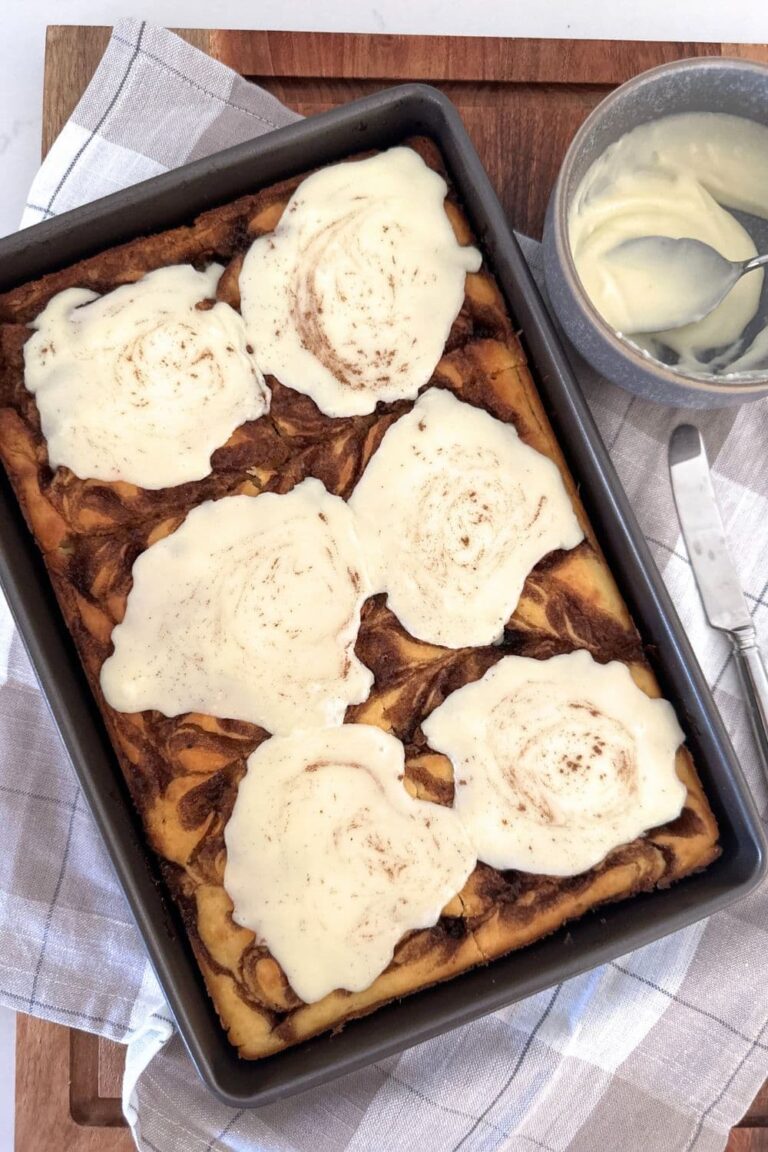
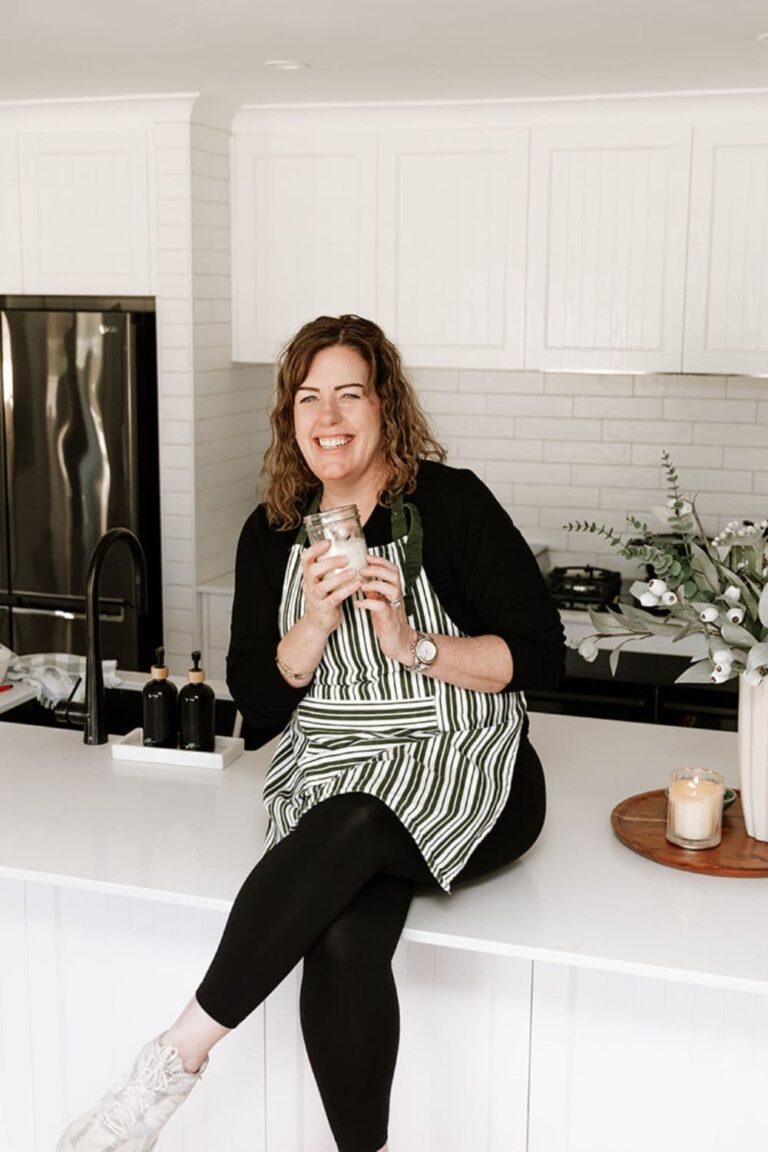
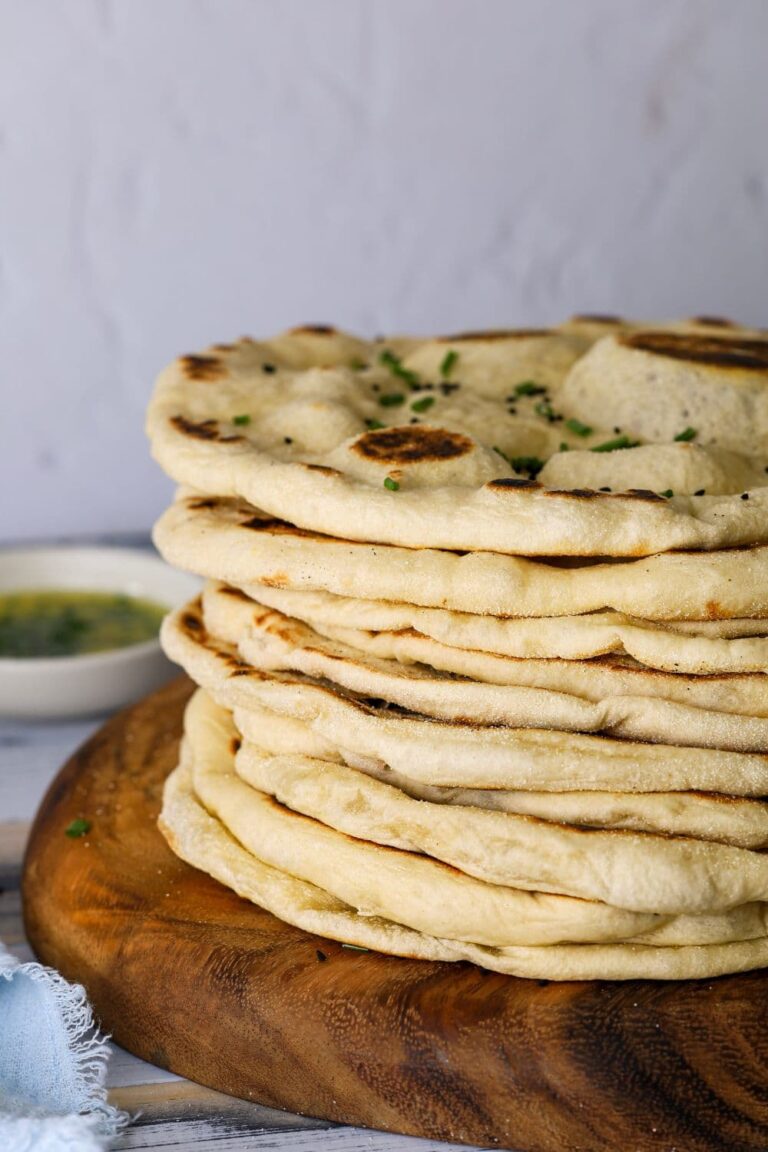
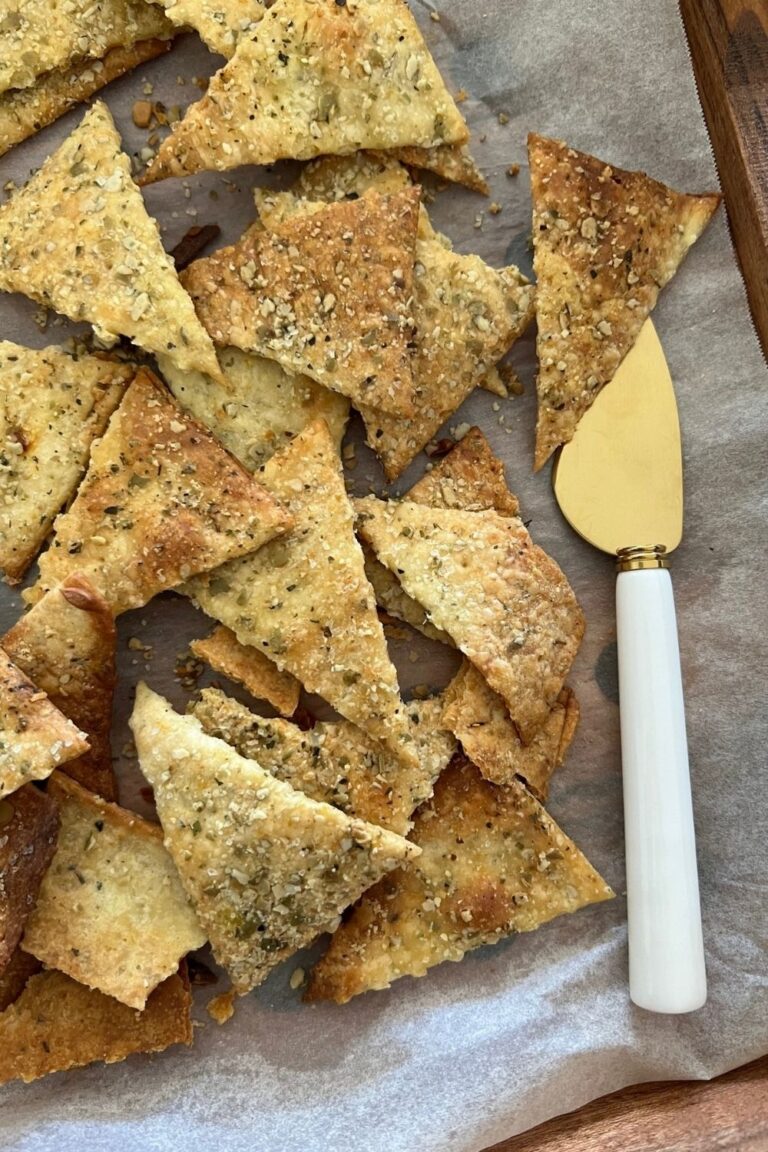

Can’t wait to start my starter. Please post more starter ideas and ways to use starter, what to do with starter hats thrown out.
Hi Marylou - you'll find some more discard ideas here: Zero Waste Guide to Sourdough Discard: 17 Interesting Ways to Use It
Can you use self rising flour? Would it hurt? That’s all I have ☹️
No you can't use self rising flour as that has leavening agents and salt in it. Plain flour is best 🙂
Hi! Thanks so much for all of your great posts- so helpful. Quick question…
Do I continue twice a day feedings forever, or just the first few weeks?
Hi Kristen, It looks like Kate isn't on here as often as she was a few years ago. I've read a lot of her other articles so I can confirm you keep feeding it forever 2x a day. This of course will give you tons of discard, but check out her discard recipes. I just made discard bagels yesterday and they turned out awesome! My starter will be 14 days old tomorrow! Happy Baking!
Thank you so much, Kerry! 🙂
Ok I got distracted and forgot to throw out half before adding flour and water. Now what?🤷♀️😰
That's ok, just measure out 50g at your next feeding and feed with 50g of flour and 50g of water.
Hi guys. Brand spanking new to this. But my gf sent me home with my glorious loaf of discard and the recipe. Question: What do I do with the discard day after day? Do I toss it? Do I add the discard each day to the same jar??
Lid on or lid off the starter jar?
I did same thing, been feeding for five days now have huge amounts because it increased each day what I feed it 🤦♀️
Was I supposed to throw away half each day? That seems like a lot of waste?
Can’t wait to bake using my starter
Can I use half white wheat, King Arthur flour or the half cup for starter?
Yes you can use a combination of flours 🙂
You sure can. You can really use any type of flour you like 🙂
Hi! This is my second go at getting a started up and running and I really wanted to use white whole wheat! I’m on day 6, but still not rising and falling. Do I just need to be patient and wait?! I don’t really want to use white, but will if I need to! Thanks
Great advice ,great learning thank you very much
Is there a possibility to print your literature so I may laminate and put in my recipe file for easy reference ...
Hi Andrew - you should be able to print out each recipe by clicking on the "print" button. Otherwise it will depend on your web browser as to how you'd print it out. However, I will have some e-books being released soon, so that will be an easy way for you to print out all of the information 🙂
We have a really active starter & after bulk fermentation our sourdough doesn’t double in size ( 24hrs in fridge)
Baking the SD does give some oven spring but the bread is dense. What are we doing wrong? We stretch & fold hourly in a time frame of 3hrs.
Thank you
Usha
You cannot bulk ferment in the fridge, it must be at room temperature 🙂 This explains why:https://www.pantrymama.com/bulk-ferment-vs-cold-ferment/
So I’m on day 4, I accidentally added 60 g flour. I then went on to add 60g water to
Keep it equal, but still managed to accidentally add more like 70g (honestly what is wrong with me) so I added the extra flour in again to make it equal. Will it be ok or should I start from scratch?? Thanks
Hi, I'm on day 6 of my starter and am wondering when it will start rising? It has a lot of good bubbles, but no rise so far. Also, at what point can I begin to use my discard? Thank you for your help!
It can take anywhere from 2 days to 2 months for it to start rising - it depends on the flour you use, the temp in your home, even the water. You can use your discard from around day 7 🙂
I have tried making three starters after accidentally killing one that my friend gave me (it got pushed to the back of the fridge, whoops). I tried one recipe from another website, and it failed. So I tried the recipe from the book Flour Water Salt Yeast by Ken Forkish. Despite feeding it 500g (yes, 500g) of whole wheat flour a day, it failed. Though I still am trying to make it work because I feel like I have invested so much (flour) into it. Low and behold, someone on instagram posted your link and I decided, for only 50g of flour a day, this was worth trying. And it has been! I am 10 days in and have a starter that is active, doubling after just a couple hours, rising easily and all with only 50g of flour a day. I also haven't been perfect with feeding it twice a day, but still it persists! I made a beautiful loaf of sourdough today by following your directions exactly and I'm thrilled! Thank you for making this so simple, for laying it out easily, and for not requiring me to use half a bag of flour for every feeding, haha!
That's so cool! I'm so happy that I've been able to help! How is it looking now? xo
After your starter is mature, must you keep discharging? Or can you just feed it?
Once your starter is mature, you don't need to discard per se - the amount you remove from the jar to bake serves as your discard. This post will explain things further x
Thanks for the very understandable explanation. I've just been going by guess- and -by-gosh. My present starter has a really nice flavor, but I'm having trouble getting it to "blow up" the dough. Part of it, I know, is that my house doesn't get above 70F during the winter, but, my crumb is fairly dense and the crust is quite robust. Using hand ground whole wheat, I knew texture was going to be an issue but I'd like to lighten it up a bit.
Once the starter is ready to bake with. Do you use all of the starter or some of it and keep on feeding what’s left for your next loaf?
Is the starter fed every single day forever? Or just once a week once it's mature enough?
Thank you so much!!!! Once it’s mature, do I still need to feed it every 12 hours or can I cut back to once a day?
Hi there! I’m on about day 8 and I’ve got a bubbly, rising starter. I was going to wait to bake with it, but did use the discard tonight. My question is, when can I double the starter recipe? When I made the discard crackers tonight, I didn’t have enough for what the recipe called for and I had to cut it in half.
So I used whey to start mine and it smells AMAZING, started noticeably growing on day 4 and I have a TON of bubbles. After day 14... what do I do? LOL. Still feed twice a day? Leave it out on my stove like I have been? I am new to your blog so maybe there is a “how to care for your new sourdough starter” post? Thank you so much for your work into this post! Super easy to follow! 💕
I've gotten a little confused on the directions. Im going into day 5 and i hardly have enough for a "100g" discard. It's not doubling. 100g discard is not half for me....kt's basicallg all of it. Trying to follow your directions but also confused. Is the 100g a typo or am i doing this wrong. It was watery until i got to the second part of day 4. I fed it even though it didnt look hungry. I had to go to bed and couldnt wait
It doesn't matter if it hasn't doubled, if you've added the weights correctly, you will have the right amounts. The recipe is measured by weight not volume. So on Day 5 you would have 150g in the jar before discarding. Just remove the 100g and then feed what's left in the jar (which should be 50g). Feel free to join my FB group for further clarification 🙂
I have a question. Once I have an established starter, and I’m storing it in the fridge, do I need to bring the starter out and let it warm up before I do a maintenance feed? Or can I feed it right out of the fridge and put it back in the fridge? Thanks!!!! So glad I found you on FB!!!!
Hi! I LOVE your advice! I have a starter which i leave out on the counter and feed every 12 hours. It bakes up well. If i choose to continue to leave it on the counter, do i have to continue with twice daily feeds? Can i go down to feeding once per day?
Hi, i am on day 2 and the starter more than doubled in size... is this normal? Lol i did not feed it, i just mixed it like the recipe called for.
Hello Kate, love your website!!!
I have recently been given a sourdough starter and have been baking some lovely sourdough bread.
However I don’t know what flour was used to make the starter, I was told to feed it with plain flour.
Can I feed the existing starter with Organic Stoneground wholemeal flour and if yes, should I then only use the same flour from then on?
If I wanted to to make a new starter with Organic Stoneground wholemeal flour would I have to keep feeding it with the same flour?
Also when I store it in the fridge should I keep the lid down tight? I see your website says to feed the starter and the place it in the fridge straight away with the lid screwed on. I am using a clamp lid jar for my starter.
Cheers Nicko.
What do I do with the discarded portions?
Hi, I’m new and today is day 2. Where do I keep my discard, in the fridge or at the counter top? Do I need to feed the discard?
Hi, I’m a newbie. Yesterday evening I started the flour & water in the jar. This morning there’s water on top. So I just gave it a stir. An hour later the water was back on top. Is this normal? Thanks!
Hello there.
I have started your sourdough starter. Looking good here. I’m on my day three now. I have done the first feed. What do you do with the remains of the half feeds?
Look forward hearing from you
Sylvia. 😊
Hi there, I was wondering if I need to start with 50g ratio or can it be less? Just so I’m not wasting so much flour (or rather building up so much discard). Every time I discard, do I just pop it into another jar in the fridge to build up a discard pit and then use it up when needed? I can’t imagine needing to bake something with the discard everyday!
Thank you!
I can’t feed my starter twice a day due to my schedule. What should I do?
I may have missed how to care for my starter after day 14. Do I continue to feed my starter twice a day?
Thanks!
Janice
I have always been so backward to make a starter - just reading your site that i stumbled upon - makes me want to make a starter - my question is that after the 14 days - and when i decide to make my sour dough bread - what do i do with the left over starter - can i put it in the fridge? - do i still have to feed it everyday? or weekly? as I would like to bake one bread every week....
What size jar should be used to make this starter?
I made some starter and froze it. Can I do that and use it?
Hi there!
Do I have to keep feeding twice per day? Or can I do it once at some point?
I live in a tropical country and my kitchen is very warm. Should I halve all the suggested timings? For example, I left my starter rest for 2 days and when I went to feed it for the first time on Day 3, it had mold on it 🙁
May I know if I start a new starter, can I use the discard starter from the 2nd days onward or do I have to wait longer?
No, you need to wait at least 7 days before using the discard 🙂
Hi I have had a rye sourdough starter for many years that went mouldy so threw it away and started a new one but using only rye flour it is very thick using equal amounts of water and flour, is it batter to use a mix of rye with white flour instead of all wholegrain rye. Thanks for your help.
Am I supposed to discard every time I feed my starter? Since I’m supposed to feed it twice a day on the second feed do I also discard?
Yes, you need to discard before every feed, even when doing it twice a day 🙂
Hi I’m new to this and would love to try it a Q when you take out before each feed do you throw away the amount you take out or can it be used for starting another ? thanks
Hi thanks for sharing this amazing recipe. Would you pls let me kno do i have wait for feeding my starter until it doubles in size or just after every 12 hours just feed it? Feeding in rising time must be done?
Thank you
Hi, do I have to continue to feed my starter twice a day everyday, forever?
I don’t need to leave the dough counter after placing it in mould
And can i bake it before 24 hr after fridge
Hi there my starter is doubling even tripling in size and only on day 3, have only fed it once. I’m not noticing it sliding back down- do I wait to feed again until it has slide marks?
Thank you for any info!
Trying my first attempt ever at sourdough starter and have to be gluten free…any tips for gluten free or can I use the same method for standard starter? Super excited to get this down!
Looking forward to hearing from you:)
Excited to get started!! Quick question before I get into it - if it’s doubling in size in 2-6 hours after ten days or so, won’t it overflow the jar? Or will it peak and fall so that won’t happen? Just want to be prepared ahead of time for an unruly starter!
Thanks!
Hello! Just a bit confused here. Do I have to always live only 50g of starter in the jar before feeding it? For exemple… if second feeding is already 100g of discard I’m assuming it will get to be more than that once it matures?
A friend gave me a starter years ago and it has been in my frig ever since. Can I start feeding it or discard it and start new?
This might be a dumb question but when feeding my starter(going on 4th week) is it possible to Over Stir the ingredients? I just want to make sure it is mixed thoroughly. This has been a journey of patient waiting and i don't want to mess up.
Thanks
No there's no possibility of over stirring - in fact sourdough starters love to be stirred vigorously! 🙂
😩 ugh, my starter is 8 days and it hasn’t risen at all. My house is cold so I have it in the oven with the light on. It’s about 75-76° in there. I’m using King Arthur organic bread flour and bottled water (my only other option is tap or reverse osmosis) and a clean jar each feeding. I’ve tried to do this in the past had didn’t have any luck and I’ve accidentally killed one by letting it get too hot which is why I’m trying do be very specific. The ones I’ve tried in the past had started rising by now. What am I doin wrong?
Try adding wheat or rye into the mix
This is so helpful! Thank you. I have a starter that I made about a month ago but I'm still struggling to get it to rise consistently. I think if I follow your directions for a while it will become stable after some time.
After the initial growth period, after the 14 days, do you continue to feed twice a day?
Yes, you'll need to feed twice a day for a good 3 to 4 months - then your starter would be considered mature 🙂
Hi, never tried this & a bit skeptical (get a bit lost/confused with the measuring, had to google the water back to mls instead of grams so hope its right), but I'm on day 4 & need to remove 100g of starter- how the heck do i measure that (ie spoons or mls be easier measure for liquids)? Is 100g the same as 100ml or how many Tbs is 100g of starter?
Thanks, hope this thing works 🤔
You need to weigh both the water and flour in grams, not mills (although technically water will be the same in mills and grams). However, if you have the scale out, it's just easier to weigh both. If you have 150g of starter in the jar and need to remove 100g, just remove 50g into a clean jar and then add 50g of flour and 50g of water to that 50g. Discard the remainder in the original jar (you should toss this as it is too young to do anything with).
Hello
I'm on day 5 of my starter due to shift work I'm going to miss the 12hour mark of feeding my starter will this ruin my batch?
No it will be fine, feed it when you can 🙂
Is there any point we stop feeding it? Also when we use our starter for actual bread do we replace what we took out?
Once mature, do you only feed it again when you take some out to make your bread?
Amazing blogs! I've followed so many.
Question: I have followed instructions and starter doubles in about 4 hours (day 7) and then sinks back down to where I started. I have tried feeding 3 or more times a day, but still sinks.....not as far as when originally started, but significantly. It also tastes more acidic.
I started on whole wheat flour and feed with 50/50 all purpose and wheat flours.
Suggestions?
I'm on day 3 of my starter. It's fairly thick, not rising, and no bubbles. Is this normal?
Hello. Love your site! A couple of questions: I like to clean my jar each time, but what I do is just rinse it out with hot water, no soap, when I feed it. Then I put it back into the jar that’s been rinsed with hot water. I make sure there’s no water inside the jar. Will that work? Also, my starter will be seven days old on Friday and I have to be out of town for two days. It will miss the Friday night and Saturday morning feeding. should I put it in the refrigerator till I get back and resume feeding? I could take it with me, but I’d rather not. Should I leave it on the counter? I asked this question in a Facebook group and got different answers. Thank you.
Do you Have a video on this Starter recipe?
I am a little confused on step 4 where it says to remove 100 g of starter. Isn’t the idea to remove half of the starter? Which removing 100 g would would suggest that I have 200 g of starter before discarding. When I remove 100 g it seems like more than half. Would it be better to discard leaving 50 g of starter and go from there? I am using a Weck jar and forgot to write down the beginning weight of the jar alone and don’t currently have a second jar to transfer to! Thank you!
At what point after the 7 days can you start using the discard in recipes?
You can use discard in discard recipes from day 7 onwards 🙂
So, I have been given a jar of (I think) discard today. It has been fed today and left at room temp for a couple of hours. I can see the level in the jar has doubled. I've been told to put it in the fridge. What then??
Can I start the starter with a smelt floor or does it need to be white flour?
Hi! I'm doing my second starter, the first one I threw away because grew but suddenly stop growing. Now with this new one I'm on day 5 and still don't see my starter growing. I clean the jar every time I feed and keep in the oven with the light on. When I'm doing the discard, I can see there is not much to throw away 🙁 I'm using 1:1:1 - 50g starter, 50g flour and 50g water each feed.
Hi, I am currently on day 6 of feeding my starter. I don't get much of a rise - about 0,2 inches and only tiny bubbles. I used tap water for the first 3 days and then switched out to filtered spring water. It is spring right now so my house isn't cold at all. Could it be that I rinse my utensils and jar with normal tap water? Please help!
My starter has Trippled for the past two days, is quite spongey, floated briefly yesterday morning but drops o the bottom today. I’m confused. How long does the float test need o last to make sure your starter is ready for a bake?
What if I forgot to feed twice a day?
I got starter from a friend and have been discarding half all but 50g and feeding it once daily. In reading this again, am I supposed to be feeding it 2x daily forever or is that just for when making starter from scratch? At what point do you accumulate enough dough to make a loaf?
Depending on how old the starter was when you got it, I would still feed twice a day for a bit so that it adjusts to your flour and kitchen environment. Once it's happy, you can store it in the fridge between bakes. It's not about accumulating enough for a loaf, anytime you want to bake, you can make as much starter as you need using these instructions.
Hello, It seems like I need more that 50g water to get all 50g of the flour moist. Also, how liquidy should it be? Thank you so much for this blog!
I'm a a first time sourdough baker and this is my story so far. I read all the guides multiple times and bought the recommended Ball mason jars plus the King Arthur organic unbleached all purpose flour. Following the directions I mixed and tended my starter and on day three I started seeing a few bubbles. By day six I wasn't seeing bubbles any more and no rise at all so I started trouble shooting. I had used tap water allowed to stand for several days in a covered jar initially so my first adjustment was to try boiling the water but that didn't make any difference. Then I tried switching out the metal cover for a paper cloth and after that I just left the jar open but neither step helped. Actually, leaving the jar open resulted in a hard crust on the top so I probably won't do that again. Next I thought I was possibly overfeeding since my house is pretty constant at 70 degrees and it seemed possible I was just not giving the starter time to get going so I backed off the feeding to once a day - no joy. Note I was trying to just make one change at a time so I could tell what worked and next I switched to Bob's Mill organic rye flour and bam - the next morning it was more than doubled and full of bubbles. Woohoo! For the next feed I split the starter into two batches - one with 70 grams of starter and one with 50 grams. I fed both 1:1:1 but used the rye flour in the 70 gram batch and switched back to King Arthur for the 50 gram batch. Two objectives here - I wanted to have 200 grams of starter I could use to bake with a regular sized batch for maintenance. I also wanted to see if the King Arthur would do any good after the starer had become active. The next morning both had more than doubled and were full of bubbles. I'm guessing this is kind of a normal approach that wasn't really documented anywhere. If you're planning to bake when you split your starter at feeding time you use part of it to maintain the starter and the other part to build active starter for the next days baking. Maybe I only had to do that since the jars I bought max out at about 200 grams of active starter? Just mixed up the English Muffin dough and looking forward to seeing how it turns out later today. Question: short of buying a proofing box how do you set up a 75 degree environment for the starter? I tried on top of the kitchen cabinets and on top of the refrigerator but neither were anywhere near that warm. Bumping the house up to 75 would be expensive and miserable. Should I just settle for the idea the starter will have to live with 70 degrees or should a small proofing box be on my wish list?
I love your website recipes, they helped me to build a new starter. I tried many ones and was not successful. I just have a question when I keep a starter on the counter do I continue feeding it twice a day same way when I was building a new starter?
Hello Kate,
I've just found your site as I was searching for info on how to start sourdough again in a hot and humid climate. Hello from neighbouring Vanuatu!
I had success during lockdown and kept my starter going for more than 2 years until we went back to visit family in Europe. Since we've been back in Vanuatu I've tried starting again but failed all 4 times. I'm just reading now that I would need to adjust the water-flour ratio and also the feeding times, but not sure how to do it.
My latest attempt started on Friday, with 2 different kinds of water, tap water and rainwater, boiled and cooled to room temp.
On Saturday my rainwater one was already overflowing and had to clean my countertop, too bubbly and too runny.
The tap water one I started Saturday morning just to be able to alternate clean jars between the two kinds.
Would I need to just toss them both and start anew, with more flour and colder water, or is there a way to save these two?
Thanks!
I'm on day 5 and so far so good! After the 14 days, do we continue to feed twice a day?
Yes keep feeding twice a day 🙂
Hello! Thanks for your support with learning how to start a new sourdough starter 🙂 When you say keep feeding it twice a day for 2-4 months, do you mean once it is active and in the fridge, or at room temperature to keep building up the yeast colonies?
Yes feeding twice a day for 2-4 months. Your starter should not go in the fridge before this time. You want to make sure it's a mature starter before you start storing it in the fridge 🙂
If there's a hooch present should I give it a stir before removing half and feeding? Is it ok to stir before removing and again after adding flour/water?
Day 4 here for me - it's not rising between feedings. I am keeping it in the microwave with the door ajar so the light is on. I am using the correct flour. Is this normal for it not to be doubling in size at this point? Thanks!!!
I found your blog and recipe after starting a starter. It was calling for 60 grams 60 grams and 60 grams. Can I change to your recipe with the starter I am already working on? I think I have been feeding incorrectly by feeding 60 grams instead of 120. Ahh, so much to learn!
Can you use almond flour?
My starter, Jorge, is doubling or tripling with every feeding within about four hours. I'm only on day 7. Does that mean it's ready to use? Or, should I still keep up double feedings until at least day 14? Your content on started is amazing!
My starter smelled like rotten vomit on day 3. It was doing really well the first 2 days, doubling in size and then on day 3 when I took the lid off the awful smell filled my whole house. Any idea on what that would happen?
After day 14 what is the feeding schedule , I can't seem too find it in your notes , I am sure i am just missing it , but i just want t make sure I get it right . my starter is looking so good right now , i do not want to mess it up I am so nervous to wreck it.
Hello!
I was wondering what ratio of feeding you recommend for the starter in the evening if planning to bake with it the next morning? (I’m also at high altitude). Thank you!
Hi, so is it OK if I add starter that I have in my refrigerator to starter that I have out on a warming mat it’s been out for like 10 days? I feed it every 12 hours and my other question is does the float test always work or is there another way of knowing that your starter is ready? I read so many different things.
Is there a possibility to feed my sourdough starter once a day or does it have to be twice a day? I usually only have time in the evening so one feeding would be convenient.
Do we need to adjust this recipe (or feeding times) in any way while trying to make the starter in a tropical environment? My room temp is currently 33C (91.4F) and humidity about 67%. Figured I'd just check on any tips on this before starting off. Thanks
33C is quite warm, so you will find that your starter is using up the flour and water you give it really quickly. I would start feeding it 1:2:2 instead of 1:1:1 and that should help the issue. All the best and I hope your starter works 🙂
Quick question- When I begin a starter do I discard at both feedings?
Yes, you need to discard at both feedings 🙂
This is a much better recipe than the one I have used previously. My starter is much more active. Thanks
I am on day 5 and it hasn’t really done much. It has bubbled but no rise. My house is 70/71 degrees most of this time. Is this the issue?
That's ok, totally normal, just keep going 🙂 Warmer is better, but it won't stop it from working.
I’m on day 4 and forgot to feed twice today (I misread which day!) Will my starter be ok if i start feeding twice a day tomorrow?
Absolutely, it will be perfectly fine 🙂
Do i discard both times when i feed it?
Yes, you need to discard before every single feeding.
I have a probably stupid or ignorant question, why do I have to discard and not just feed and use the starter?
Never a stupid question 🙂 So if you didn't discard, you'd end up with a MASSIVE starter! If you had 50g of starter and fed it 50g of water and 50g of flour then you'd have 150g of starter ... then you'd need 150g of flour and 150g of water for the next feed and so on. This post explains why you must discard your starter before each feed.
What would the measurements be if I want to make two loaves? Do I just double everything to include the starter? Thank you!
Hello! Love your site! I think I screwed up. On the second day I removed and added flour/water instead of just stirring. Will it recover or should I start over?
It will be ok, just keep going 🙂
Hi, Can I use rye sourdough starter for baking kamut or spelt sourdough bread?
If you have 100g of starter (I've had this starter for over 6 months, ive beenbaking Sourdoughbread since ive made my starter im fairlynew at this) and ive added 100g of flour and 100g of water, is this ratio okay? The last few bakes my dough has been very sticky and im wondering if my ratio is off on my starter
I’m on day 7 and my starter is not rising at all. It rose one time and doubled in size on day 3 and hasn’t risen since. I started with whole wheat flour and then switched to unbleached bread flour. It’s a little chilly in our house so I’ve been keeping it wrapped in a towel in the pantry and warming up the water to room temperature. It doesn’t smell foul, just sort of sour and yeasty. It is bubbling, but not rising! I’m using Berkey water and keeping the same jar with the lid on. Am I doing something wrong or do I just need to wait it out? Thank you!
I don't think you're doing anything wrong, starters just take time. Definitely use warm water if it's a bit cold and try to keep it warm consistently 🙂
Help It wasn't even a full day when bright neon pink spots appeared on my starter. It doubled in size and has bubbles but these neon pink dots appeared like sprinkles. It also smelled a mixture of acetone and vomit. I'm pretty sure this counts as failed. Others had faint pink streaks almost orange in hue but the ones from my starter are almost like hot pink/neon pink so I was shocked at first lol.
Pink spots or streaks indicate a bacterial growth (you can read more about this here).
You definitely don't want to continue with a starter if it shows pink. Have you tried different batches of flour?
How thick should the starter be when starting? 50g water and flour seems very thick?
Yes thicker is better, it will thin out as it ferments. You want it like warm peanut butter 🙂
I am on day 3 and a complete beginner to sourdough! You are so inspiring Kate! I can not wait to bake all of your delicious recipes! Thank you for being so detailed and explaining literally everything so well! ❤️❤️
I was not paying attention and only discarded 50g on the first feed of day 4. Help!
That's ok, just take 50g out the starter you have now and feed that into a clean jar 🙂 It will be fine 🙂 xx
Starter doubled days 1-2, but flat lined since day 3 (on day 6 now). I've read lots of your posts (thank you for all the data), and have decided to pull 50g of the original starter, and add 50:50 to hopefully kickstart again. My question is this:
You mention from day 4 "Remove 100g of your starter and then add 50g of flour and 50g of water to the remaining 50g of starter in your jar. "
Can I just interpret this as: remove all but 50g of starter, and add 50:50?
Yes that is correct 🙂
I'm having so much fun making bubbles! How you Doughin' is working on day 4. Hungry and popping when I peek! He's getting ready for his morning feeding now!
To stir or not to stir that is my question. Do you stir before removing "discard", or do you stir before feeding starter after "discard" , or both ? I am on day 3, have tried to read all relevant pages but cannot find reference to this.
At what point can we store in fridge?
You don't want to put your sourdough starter in the fridge until it's mature. You can read more about understanding when your sourdough starter is ready to use.
I have seen starter made from beer, is this possible?
You don't need to make a starter from beer, flour and water is all you need. You might like to add beer to sourdough bread though 🙂
Took me a little time to get my head round the recipe but have now cracked it. That said, my house is usually on the cool side 17 to 17.5c and my starter (Raising D' etre) took the huff until I upped the temp to 18.5c(energy is expensive in the UK), moved her in front of a radiator and swaddled her is a throw blanket. Now she is off and running and I have kept some discard who will eventually live in the fridge as my back up. Due to the slow slow start I'll wait around 10 days before I give her a debut. I have used British Wholemeal Flour.
PS: Keep up the good work.
Hello new to making a sourdough starter. I do have a question about Day 4 feeding in the evening. Am I suppose to discard anything when I feed the starter that evening? Thank you!
Yes, you need to discard before every feed 🙂
I have taken a stab at a first attempt (today on Day 3) but I have a question -
Once my sourdough is ready, and I use it in a recipe, do I need to start a new sourdough from scratch, or can I keep part of the dough as my new starter? and if so, at what point of the recipe, and how much do I take?
So, if you have 150g of starter in your jar and you take 100g out for a recipe, you'd feed the remaining 50g of starter in your jar and allow it to peak ready for your next bake 🙂
Hi ours is doing great and we are almost 3 weeks in, can we drop down to once a day feeding? Thank you as well
I recommend feeding twice a day, but you can feed once a day if you prefer 🙂
Should I make a double batch if I plan to share with a friend? Or just 1x and split it, refeeding it to gain more volume?
No need to make a double batch, the best thing to do is to just make a viable starter (so wait until your starter is mature). Then take 50g and pop it in a jar for your friend! This is also a great post on how to share sourdough starter.
I'm not sure what I'm not doing. My starter is 2 weeks old today. It more than doubles when it's doing it's thing, but I don't have those big bubbles in it, just many, many small bubbles. Right after feeding, within 30 mins., I get just a few bigger bubbles, but that's it. I'm using organic unbleached bread flour, and feeding every 12 hours. When it's feeding time, the starter has visibly fallen and it is loose, but it still has a small bit of stretch in it. Maybe I'm feeding too often. I can't find any information on my specific problem, so maybe you could help. Thank you!
It doesn't necessarily matter whether your bubbles are large or small, the most important thing is that your starter is doubling, which it sounds like it's doing. If you do want those larger bubbles, it's generally a case of lowering the hydration of your starter. I've put together a post on how to get bigger bubbles in your sourdough starter which will help. But as long as your starter is doubling, it's doing what it's meant to.
Hi I just started making a new starter. I’m up to my 3rd day. I was wondering if I can feed every 24 hours instead of every 12 hours? Thanks so much for all your helpful information, I love your site.
I don't recommend only feeding once a day, but if it works better for you then you definitely can. I would feed a 1:2:2 ratio if you're feeding once a day 🙂
Struggling!! I’m on day 5 and in the post it’s been saying to REMOVE 100g of the starter than add in 50g water and flour but that leaves me basically nothing left in the jar once I’ve removed 100g. But then further down in the post when talking about clean jar or reusing the jar you say only removing 50g…
Have I just waisted 5 days of a starter that won’t work now? Is it 50g removal or 100?
No you definitely haven't wasted 5 days. So It's not saying different things ... you either remove 100g from the jar and feed the 50g (or whatever is left in your jar) with 50g of flour and 50g of water OR you take 50g and put it into a clean jar and feed 50g of flour and 50g of water. They are both the same method of feeding, but one is into a clean jar and one is into the same jar - it just depends on what works better for you 🙂
I understand that if you do not have filtered water.. you must leave the water out for several days to remove chlorine. Is this so?
Leaving it sit overnight should be sufficient. This post talks a bit more about which water to use for sourdough.
Hi! I’ve been following your directions. I am on day 6. I started seeing bubbles throughout around day 4. I haven’t really been seeing it rise and fall and have been having a lot of hooch. Any suggestions? Should I try a higher ratio, if so which one (in grams?)
It's normal for your starter to get bubbles but not really rise and fall yet. I would just keep going, although if you are getting hooch then it would indicate the your starter wants a bit more food. Try a 1:2:2 ratio and see how that goes 🙂
Thank you for all the great detail!
Question about starter lids: my started kit came with tin, screw on lids, as well as those cotton hats that you can place over the jars. When/why choose one or the other when managing your starter?
I actually prefer to use a plastic lid, you can see the plastic lids I use here. It's really up to you - the cons are that the metal lid will more than likely go rusty, but the cloth cover can cause your starter to dry out. If you have one of those ring lids, where you can take the flat part of the lid out, this can just sit on top of the jar which is a good compromise 🙂
What do you do with the discard during the days that you are starting the starter
You need to toss the discard from the first 7 days, it's not able to be used 🙂
If I miss my 2 feedings on day 4, is that a problem?
It's not ideal, however just keep going, your starter will be fine 🙂
like all the info...will help me alot.. question though can we store discard for a couple days to have enough to use to bake ..thanks..been forty years since I have keep a sourdough starter
Yes you can do this 🙂